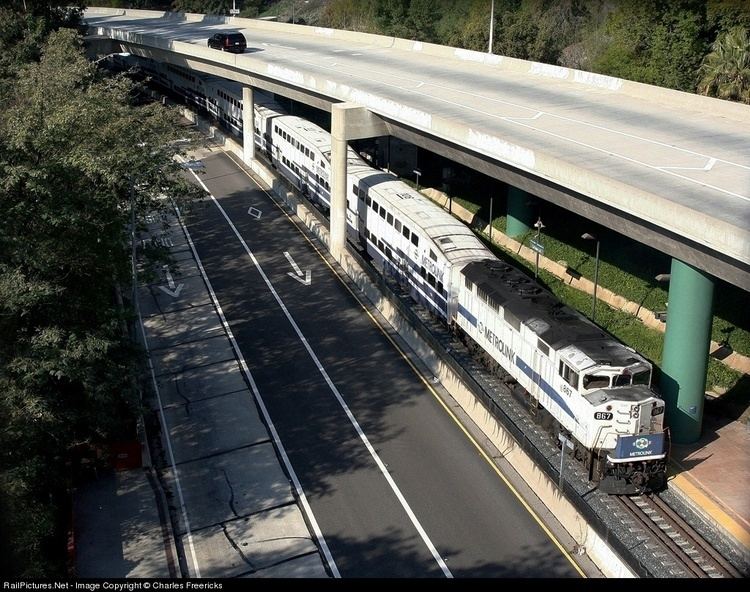Status Operating Line length 56.5 miles (90.9 km) Stations 14 | Daily ridership 12,633 (2012) | |
 | ||
Character Elevated and surface-level Terminis Santa Fe Depot, Los Angeles Union Station | ||
Metrolink san bernardino line san bernardino los angeles union station
The San Bernardino Line is a Metrolink line running between Downtown Los Angeles east through the San Gabriel Valley and the Inland Empire to San Bernardino. It is one of the three initial lines (along with the Santa Clarita and Ventura Lines) on the original Metrolink system. When the line opened in 1992 service extended only as far as Pomona, but in 1993 the line was extended to San Bernardino. Saturday service was added in 1997 and Sunday service in 1998.
Contents
- Metrolink san bernardino line san bernardino los angeles union station
- Metrolink san bernardino line train timelapse
- Stations
- Route
- San Bernardino extension
- References
As of August 2016, 20 trains run Los Angeles to San Bernardino on weekdays. It is the first of the seven Metrolink lines to run on both Saturday and Sunday, with 10 trains to San Bernardino on Saturdays and 7 on Sundays. Two Saturday and two Sunday trains would continue to the downtown Riverside station until July 5, 2014, when weekend service on the 91 Line began.
Metrolink san bernardino line train timelapse
Stations
The San Bernardino Line serves the following stations:
- Union Station, Downtown Los Angeles
- Cal State L.A. station, University Hills, Eastside Los Angeles
- El Monte station, El Monte
- Baldwin Park station, Baldwin Park
- Covina station, Covina
- Pomona North station, Pomona
- Claremont station, Claremont
- Montclair station, Montclair
- Upland station, Upland
- Rancho Cucamonga station, Rancho Cucamonga
- Fontana station, Fontana
- Rialto station, Rialto
- Santa Fe Depot, San Bernardino
There are also platforms at the Fairplex in Pomona and Auto Club Speedway in Fontana, but these are used only for special events.
Route
After leaving Union Station and crossing the Los Angeles River, the line follows the San Bernardino Freeway and El Monte Busway until just after the Cal State L.A. station; it then runs in the median of the San Bernardino Freeway to the El Monte Station along the former route of the Pacific Electric Railway's San Bernardino Line. Starting at El Monte, the line parallels the Union Pacific's Sunset Route (ex-Southern Pacific) for a few miles before turning northeast at Bassett 34.0507°N 117.9971°W / 34.0507; -117.9971 onto a Southern Pacific branch. At 34.0939°N 117.7303°W / 34.0939; -117.7303 (a former Southern Pacific/Pacific Electric-Santa Fe crossing), it switches to the Santa Fe; from Claremont to just west of San Bernardino it follows what was the Santa Fe's Pasadena Subdivision (and before that the Second District of the LA Division, the Santa Fe passenger main line). The San Bernardino Line is mostly single track with 6 passing sidings and short sections of double track near Covina, between Pomona and Montclair, and west of Fontana.
San Bernardino extension
San Bernardino Associated Governments (SANBAG) conducted an environmental impact report (EIR) to extend rail service southeast from the current eastern terminus in San Bernardino to Redlands. The extension was planned to follow the 9-mile (14 km) Redlands Subdivision and comprise two phases:
